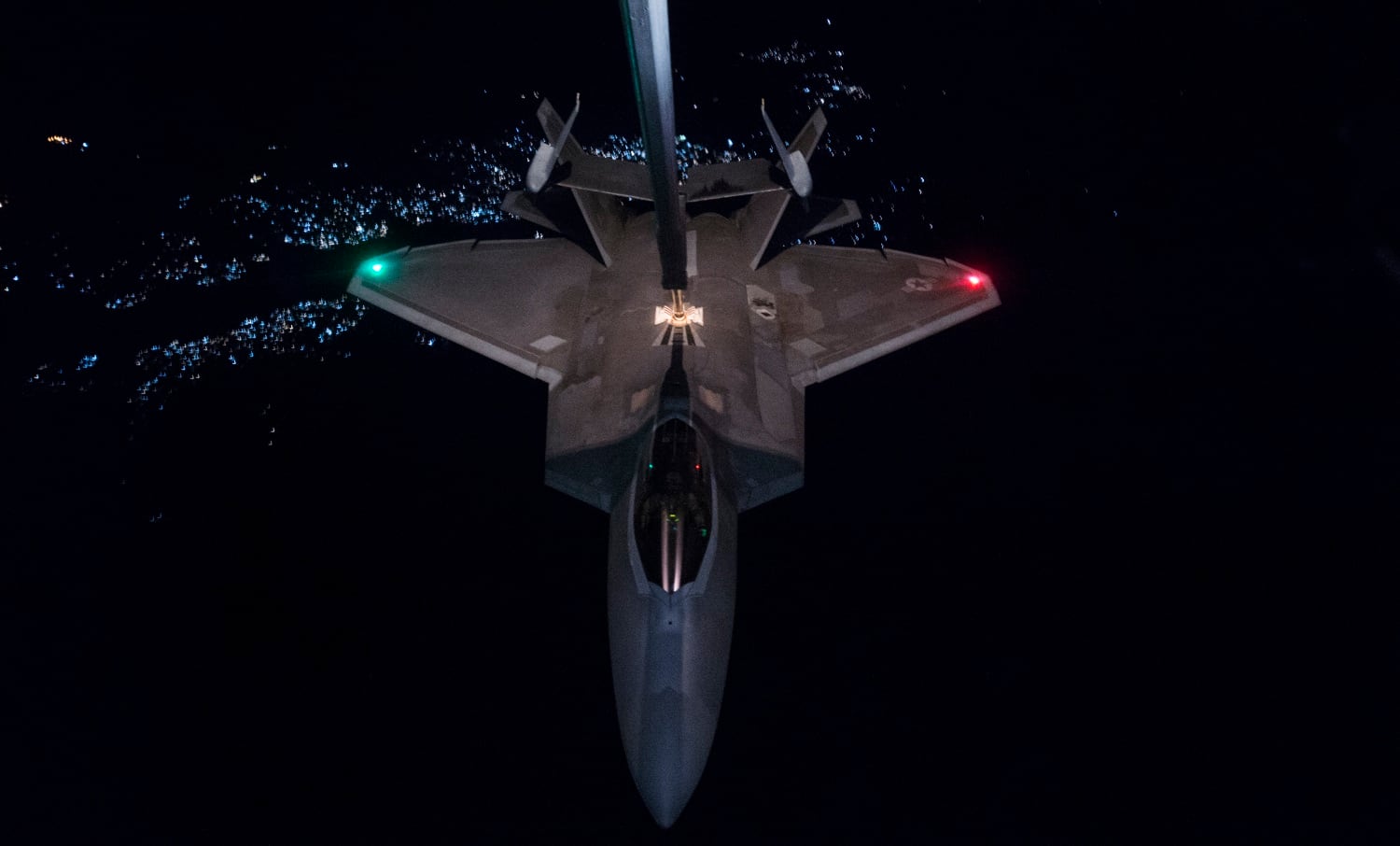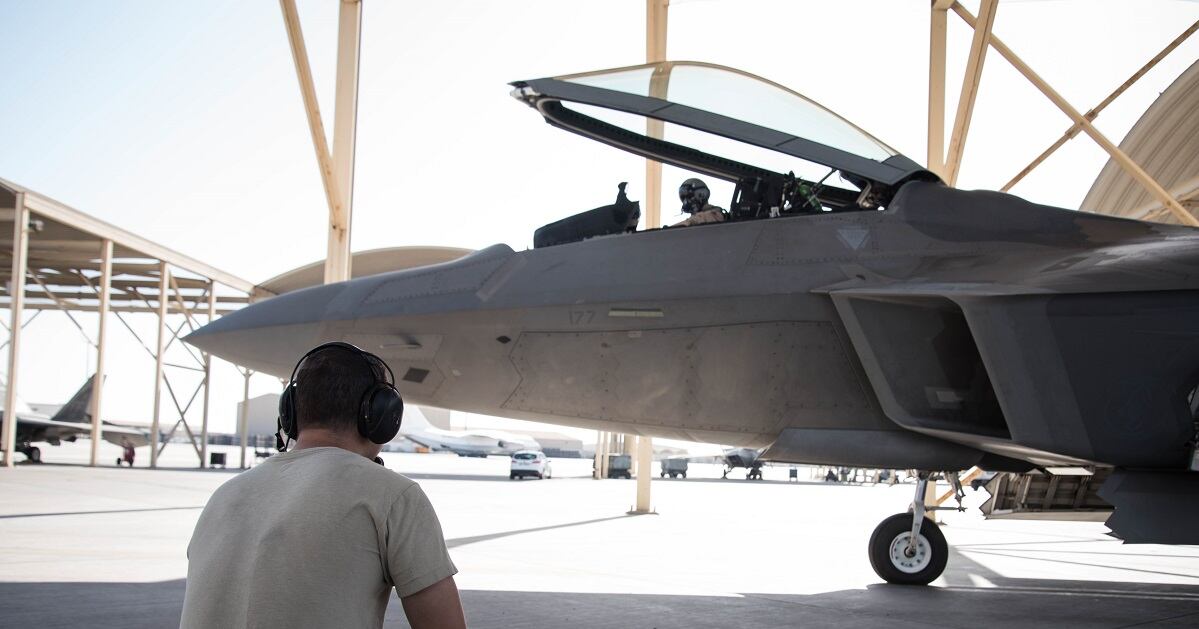U.S. Air Force F-22s recently completed their first “combat surge” in operations over Syria, and in doing so deterred almost 600 Syria, Iranian and Russian combat aircraft in the crowded skies there, the Pentagon said.
Raptor pilots from the 94th Fighter Squadron out of Joint Base Langley-Eustis completed 590 individual flights, totaling 4,600 flight hours, with 4,250 pounds of ordnance dropped in their deployment to the region in the “first-ever F-22 Raptor combat surge.”
The Pentagon said the F-22s, assigned to the 380th Expeditionary Fighter Wing at Al Dhafra Air Base in the United Arab Emirates, “deterred” 587 enemy aircraft in the process, suggesting the jet commands some respect against older, Russian-made models often in operation by Russian and Syrian forces. This surge saw F-22 operations maximized over a three-day period.
Unlike any other battle space today, U.S. forces on the ground in Syria have come under threat from enemy airpower.
RELATED

F-22s on this deployment escorted Navy F/A-18s as part of their mission. In June 2017, Lt. Cmdr. Mike “MOB” Tremel, a Navy F/A-18E Super Hornet pilot, scored the U.S.’s first air-to-air kill in years after downing a Syrian Su-22 that threatened US forces in the country.
The stealth fighter pilots defended U.S. forces against enemy bomber aircraft and also backed up U.S., U.K., and French forces when they struck Syrian President Bashar al-Assad’s regime in the country’s west in response to chemical weapons attacks.

The F-22s flew "deep into Syrian territory, facing both enemy fighters and surface-to-air missile systems," the Pentagon said.
While no US or allied aircraft went down, photos from the most recent U.S. attack on Syria’s government show the country’s air defenses firing blindly into the night sky as the F-22s worked overhead.
The F-22 has encountered enemy fighter jets above Syria before, but the Pentagon has only reported relatively safe interactions and intercepts.
♦ China’s mysterious H-20 bomber has a nuclear mission, but that’s got nothing on its real threat
♦ Trump has his cake and eats it too with sanctions tanking Iran’s economy and oil staying low
